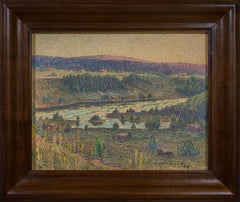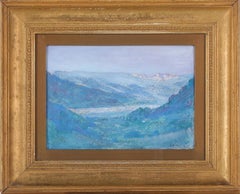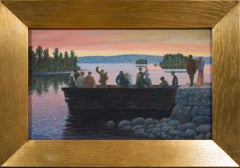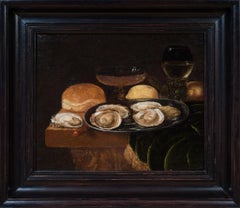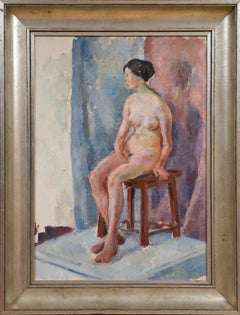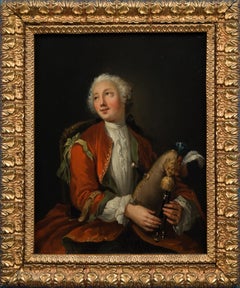Sweden - Art
1910s Post-Impressionist Sweden - Art
Paper, Crayon, Ink
Early 1900s American Impressionist Sweden - Art
Paper, Watercolor, Cardboard
1920s Romantic Sweden - Art
Paper, Watercolor
1650s Old Masters Sweden - Art
Oak, Oil, Wood Panel
1920s Modern Sweden - Art
Oil, Canvas
18th Century Rococo Sweden - Art
Oak, Oil, Wood Panel
18th Century Old Masters Sweden - Art
Oil, Wood Panel
Early 1900s Post-Impressionist Sweden - Art
Paper, Watercolor
1910s Impressionist Sweden - Art
Paper, Crayon, Watercolor, Pencil
1920s Realist Sweden - Art
Oil, Wood Panel
1850s Romantic Sweden - Art
Oil, Canvas
1930s Post-Impressionist Sweden - Art
Canvas, Oil
Late 19th Century Other Art Style Sweden - Art
Paper, Oil, Cardboard
1910s Post-Impressionist Sweden - Art
Oil, Board
1850s Realist Sweden - Art
Canvas, Oil
1940s Naturalistic Sweden - Art
Canvas, Oil, Board
Early 20th Century Romantic Sweden - Art
Gouache
Mid-19th Century Other Art Style Sweden - Art
Oil, Canvas, Cardboard
1910s Sweden - Art
Oil, Wood Panel
1880s Romantic Sweden - Art
Oil, Wood Panel
1910s Naturalistic Sweden - Art
Paper, Drypoint, Etching
1870s Realist Sweden - Art
Canvas, Oil
17th Century Old Masters Sweden - Art
Paper, Crayon
1910s Naturalistic Sweden - Art
Canvas, Oil
1910s Impressionist Sweden - Art
Oil, Board, Canvas
1930s Post-Impressionist Sweden - Art
Canvas, Oil
1950s Constructivist Sweden - Art
Paper, Crayon, Pastel, Mixed Media
1880s Impressionist Sweden - Art
Canvas, Oil, Board
1910s Post-Impressionist Sweden - Art
Oil, Board
1890s Impressionist Sweden - Art
Oil, Board
16th Century Old Masters Sweden - Art
Oil, Wood Panel
Early 19th Century Sweden - Art
Oil, Panel
1920s Post-Impressionist Sweden - Art
Canvas, Oil
1840s Other Art Style Sweden - Art
Paper, Pencil
Late 18th Century Old Masters Sweden - Art
Canvas, Oil
17th Century Old Masters Sweden - Art
Copper
1960s Naturalistic Sweden - Art
Oil, Board
1950s Romantic Sweden - Art
Canvas, Oil
18th Century Old Masters Sweden - Art
Canvas, Oil
Mid-19th Century French School Sweden - Art
Oil, Wood Panel
Early 1600s Old Masters Sweden - Art
Copper
1910s Romantic Sweden - Art
Canvas, Oil
1940s Post-Impressionist Sweden - Art
Canvas, Oil
17th Century Old Masters Sweden - Art
Canvas, Oil
2010s Sweden - Art
Pigment
1930s Post-Impressionist Sweden - Art
Canvas, Oil
19th Century Sweden - Art
Canvas, Oil
Late 19th Century Impressionist Sweden - Art
Canvas, Oil
1910s Post-Impressionist Sweden - Art
Canvas, Oil
Early 17th Century Old Masters Sweden - Art
Slate
Late 19th Century Naturalistic Sweden - Art
Paper, Watercolor
Early 20th Century Impressionist Sweden - Art
Canvas, Oil
Early 19th Century Old Masters Sweden - Art
Oil, Wood Panel
1870s Impressionist Sweden - Art
Canvas, Oil
2010s Abstract Expressionist Sweden - Art
Acrylic
Late 19th Century Realist Sweden - Art
Canvas, Oil
2010s Pop Art Sweden - Art
Silver, Bronze
1960s Sweden - Art
Masonite, Oil
Early 20th Century Naturalistic Sweden - Art
Canvas, Oil, Cardboard
17th Century Old Masters Sweden - Art
Canvas, Oil
